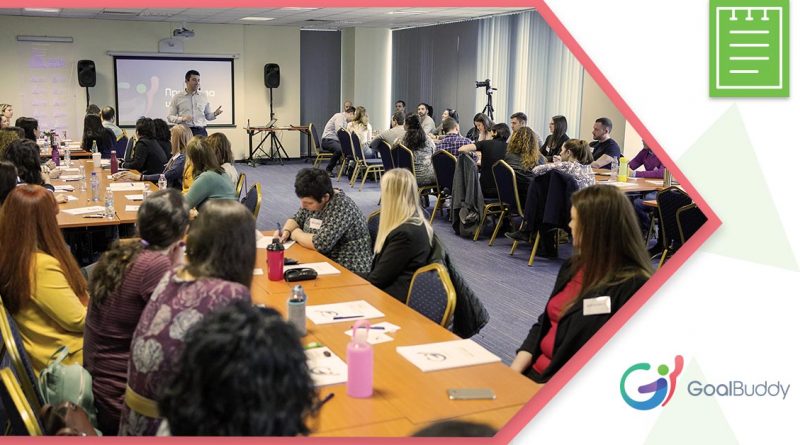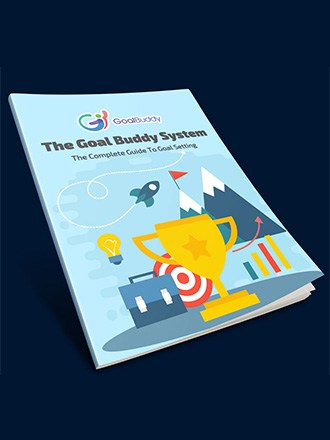How the three types of people – auditory, visual and kinesthetic – set goals
The theory of Neuro-Linguistic Programming [NLP] defines several categories of people, the main ones being auditory, visual, and kinesthetic. Without being experts, we are very curious to see how NLP affects the whole process of goal setting. Today you can find out for yourself which of the three groups you fall in. And if you keep reading we’ll show you some good examples so that you can learn a couple of useful practices.
We process information differently
Ivan came to that realization only recently. During a work meeting with a colleague, he noticed how the two of them were dealing with the facts of the issue at hand in very different ways. Ivan was taking notes while the other person was relying solely on his memory. One was of the auditory type and the other of the visual one.
This observation intrigued us and decided to dig deeper.
For some, it is critical to have things written down and therefore readable. Others analyze information better when it is in the form of sound.
How to find out what type we are
This could be quite tricky since each one of us is more or less a combination of the three modes.
Let’s look now at some general guidelines that can help you in figuring out that.
The visual one
The members of this group are very good at perceiving information through their eyes. They remember pictures better than sounds. They pay more attention to the looks of things and their memory is much more visual. But they are also easily distracted by movements and brighter colors.
They often use words and phrases such as:
- “Do you see?”
- “I see things that way.”
- “I noticed that.”
- “Look at it from this angle!”
- “I see a trend.”
- “It seems.”
- “It was a revelation to me.”
- “The big picture.”
It is characteristic of them the excessive waving and gesturing. Or, as the “auditory” Niki would state “The hand sign completes the picture.”
For some, this is so extreme that if they were to be handcuffed, they won’t be able to complete a single sentence.
The auditory one
Unlike visuals, these people rely more heavily on what they hear. For them, it is important how an argument sounds and the overall tone of the conversation. If the speech is well structured and the voice is melodious then they can remember better and in more detail.
They’d rather listen to audiobooks and podcasts than watching videos clips. They associate events and memories with the music that was playing at the time. Still, though, they are more easily distracted by noise.
They often express themselves in the following:
- “I’m listening to you.”
- “How does it sound to you?”
- “Did you hear that?”
- “To tell you the truth…”
- “I hear you.”
- “I am all ears.”
And their preferred choice of communication is talking on the phone.
The kinesthetic one
These fellas avoid phone calls and emails. They are very much into meeting face-to-face, shaking hands, and staying as close to you as possible. They feel the constant need to move their hands while listening to you. In short, their favorite line of communication is the kinesthetic type.
It is typical for them to say things like the following:
- “Do you feel it?”
- “I feel it in my guts.”
- “It touched a sour spot.”
- “A hit in the bullseye.”
- “Hot news.”
- “A cold shiver ran down my back.”
- “I got goosebumps.”
According to some studies, the majority of Bulgarians are like that.
And how about you – what are you?
The three categories and goal setting
We have repeatedly said the following:
If you don’t write down your objectives you may very well have none.
This applies regardless of which of the three types you might be.
However, there are several ways to improve your vision based on what your preferred channel of communication is.
The idea is to bring your dreams in focus by encoding them permanently in your mind. That will affect your daily life by having it always directed at what your long-term objectives are.
Tips for the visual ones
For them, an idea must be not just written, but well thought out, structured and properly formatted. This would allow them to have a very quick look at it and then experience the emotional charge it carries. If it is done on A4 format it might be a bit harder and after a time the central idea would become somewhat fuzzy.
These are some of our proven and time tested tactics:
- Make a “vision board” with images of your objective.
- Just like Ivan, you can select some photos related to one of your goals to run as your screen saver.
- Write or draw on a whiteboard so that the idea is in front of your eyes throughout the day.
Tips for the auditory ones
Their goals must also be put in black on white. But once that’s done it should be read and spoken out loud more often. Sharing turns out to be especially effective in that respect. This can trigger even greater actions. Or as it is in the old saying – “A deal is a deal!”
The best piece of advice here is not to miss a single talk with your Goal Buddy.
And few more of the good practices:
- Make an audio recording of a given vision using some of your favorite music as a soundtrack. You can listen to it while commuting to work or during the morning run in the park. This will create a highly motivational association.
- And if your Goal Buddy is of the auditory type you should be well aware of the following. The best you can do to help him is by using the same words they used to explain themselves.
Tips for the kinesthetic ones
Those of us who are of the sense and touch type need some real physical stimulation. Well, not exactly like Scrooge McDuck, who has to dives into a pile of gold… But then, why not?
Here’s what we suggest you try:
- Use a corkboard to pin magazine clippings, pieces of fabric, or any “physical evidence” that your mind is fully engaged with a specific notion.
- Do some “anchoring” with aroma, taste, etc. – anything that can bring back the feeling.
- It would be best for you to work on 90-day experimental goals that revive that same feeling. That’s how you will know if you are on the right track.
A few examples
# 1: A travel vacation
That’s a popular one in the vision for family or entertainment.
- If you are a visual do like Ivan and set your screensaver with photos of your dream destinations.
- Someone who is of the auditory type should create a playlist with music from the respective country, i.e. Cuban if you are going to the island.
- And if you’re kinesthetic then you can start collecting some fridge magnets souvenirs of the place you are to visit.
# 2: A new car
Even if we are not big fans of the “material” type of goals we know for sure that many of us have those from time to time.
- The visual will appreciate a poster of the car on the wall.
- The auditory one will be happy every time they hear the sound of the powerful engine revving up.
- A kinesthetic one might simply go and buy a scaled model of the desired vehicle.
# 3: Personal finance
The vision for achieving financial independence can start with educating yourself on the subject and end up with saving some amount of money for generating passive income.
- The visual will read books, make plans, diagrams, and PowerPoint presentations.
- The auditory ones would probably enjoy listening to online courses or podcasts on the topic.
- The kinesthetic ones might keep in their living room or a large piggy bank, or fake gold ingot.
In the end, words are everything
Regardless of how you analyze information a structured set of ideas in your mind is all that matters.
Therefore, it is crucial to outline the vision in the way that best resonates with you. If you think of a new home, write down what you see as the most exciting thing about it. What would be the picture of what exactly the dream house looks like to you? Would it be a quiet street with singing birds outside or the fact that it is a very well built structure that creates a sense of calm and security? Well, it’s entirely up to you how you create and “store” that picture in your mind.
Try out these little tricks so that you can outline your objective in the way that works best for you! But be careful what goals you set, because… they might very well come true one day!


